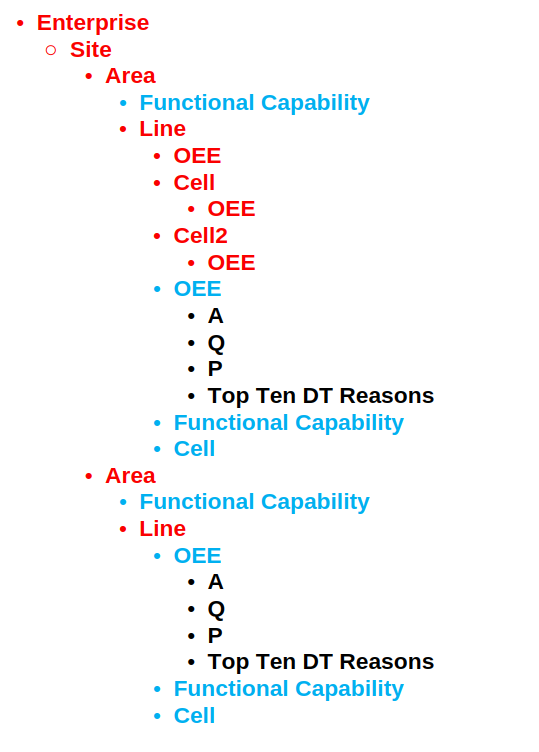What is the Unified Namespace (UNS)?
In today's industrial world, where technology is rapidly evolving, you've almost certainly heard of the concept of Unified Namespace (especially if you follow our content). Since it's creation in 2005 by Walker Reynolds, and it's explosion in adoption since 2015, UNS is changing how industries handle and use data, making things simpler and more connected in a world where everything from machines to software need to work together seamlessly.
The Unified Namespace (UNS) is all about making data management and system connections easier to handle, breaking down the barriers and complications often found in older systems and architectures. It's like having a common language in a company where every machine and software can understand and use data without confusion.
In this blog post, we're going to dive into what the Unified Namespace really is, answer some common questions about it, and clear up any misunderstandings. Our goal is to help you understand how this concept is not just a buzzword but a practical tool that is making digital transformation possible at scale.
What Is The Unified Namespace (UNS)?
In the world of Industry 4.0, understanding the Unified Namespace (UNS) is key to grasping how modern industries are evolving. But what exactly is the Unified Namespace?
Understanding The Concept:
The Unified Namespace (UNS) is the structure of your business and all of the events. It's not a specific piece of software or a physical entity, but rather a model for organizing and accessing data across an entire enterprise. Think of it as a universal language or a common paper where all data across a company's business, including various systems, machines, and processes, is written, making it accessible and understandable to anyone, anything, and any part of the business.
The Need For UNS:
In Industry 3.0 settings, each machine and software system often operates in isolation, using its own data format. This leads to inefficiencies and communication barriers, making it challenging to scale and integrate new technologies. The Unified Namespace addresses these challenges by offering a common ground where all data is standardized and shared, ensuring seamless communication across different systems.
How It Functions:
Every Component in the enterprise, including PLCs, SCADA systems, MES, and ERP, are treated as a "node" in an ecosystem. These nodes publish their data to the UNS, where it can be access and used by other nodes. This creates a seamless flow of information, eliminating the need for complex, individual connections between systems. Adding an inventory management system? Simply plug it into the UNS, and it can begin consuming the data it needs.

What Does It Look Like?
The Unified Namespace uses a semantic hierarchy (as suggested in part 2 of the ISA-95 Standard) for structuring data and information. Starting from your Enterprise level, to Site, then Area, Line, and Cell. Organizing your UNS like this provides a common structure to all data, allowing anyone in the organization to be able to find what they need.

Key Characteristics:
- Single Source of Truth: The UNS servers as the central repository of all data, ensuring consistency and reliability
- Real-Time Data Representation: The UNS servers as a single-pane of glass for all data and information in a business, similar to how your smartphone serves as a single-pane of glass for all of human knowledge.
- Scalability and Flexibility: With the UNS, adding new technologies and software becomes easier as they simply integrate in the existing Unified Namespace.
- Foundation for Advanced Applications: The centralized data structure of the UNS is essential for applications like predictive analytics and real-time optimization
Implementation Aspects:
- Common IIoT protocols, such as MQTT (Message Queuing Telemetry Transport) are often used to implement UNS, supporting efficient, scalable, and secure data exchange.
- The UNS is flexible and can be integrated with various platforms that support necessary minimum technical requirements set by your organization, such as MQTT and the Sparkplug B standard.

Common Questions
1. Where Does the Unified Namespace Live?
- The Unified Namespace doesn't reside in a specific location or within a single piece of software. It's a conceptual framework that exists across the entire network of a business. The UNS is implemented through the integration of various systems, machines, and software applications, each contributing to and accessing the shared data pool. It's more about how data is structured and accessed across the network rather than a specific "place" where it lives
2. What Software Can Be Used to Build a Unified Namespace
- Building a Unified Namespace is flexible in terms of software choices, as long as the chosen platforms support the necessary minimum technical requirements of your business. Some popular software options include:
- HighByte Intelligence Hub
- Inductive Automation's Ignition
- Tatsoft's FrameworX
- and more
- The above list is by no means exhaustive and the above 3 platforms should not be taken as the only options for UNS. Various IIoT platforms can be adapted to build a UNS, provided they support IIoT protocols and standards like MQTT and Sparkplug B.
3. Where Does History Get Stored in a Unified Namespace?
- Historical data is typically stored in databases and historians that are part of the overall network. These databases can be on-premises or cloud-based, depending on the business's needs. The UNS itself facilitates the collection and transfer of this data to the storage databases, but it's not the storage location. The key is that the historical data remains accessible and integrated within the UNS framework, allowing for efficient retrieval and analysis as needed.

